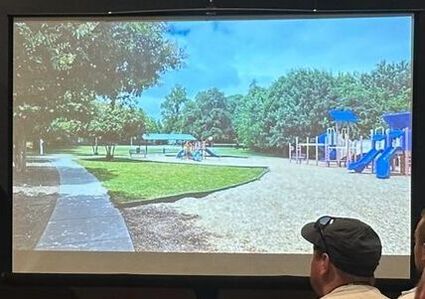|
The practical applications of Risk Terrain Modeling (RTM) for policing, crime prevention, and public safety demonstrated through professional presentations at the IACA conference in Grapevine, Texas were engaging and inspiring. Here are 3 notable examples that can be replicated elsewhere. Durham, NC For decades that playground (slide in left pic) didn’t have kids playing in it because it was a chronic crime hot spot. Longtime Durham Police Department (DPD) officers described it as being that way since they were new recruits… and never thought it could change, until now. Crime Analyst Lauren Kingsbury discussed how DPD uses RTM for crime prevention and Risk-Based Policing (RBP). The DPD pilot study focused on places, not people: Each PD District got RTM analyses for the unique crime patterns within them. Then police and other city partners coordinated their strategy for target/control areas, treatments, dosage, and success measures for evaluation. It worked! “It is something we are going to continue doing,” Kingsbury explained. With (RTM): “We have seen a reduction in many issues and could not have made the progress we have seen without the partnerships we have formed." — District 1 Lieutenant Kansas City, MO The city began with Risk-Based Policing and now does Data-Informed Community Engagement (DICE). They start with Risk Terrain Modeling (RTM), then use results to partner w/ local stakeholders who do what they do best at the places needing them most. Captain Jonas Baughman from the Kansas City Police Department presented on behalf of the city to show how it's as easy as 1-2-3! Read more about the Mayor's DICE Taskforce at kcur.org Dallas, TX The Child Poverty Action Lab (CPAL), a nonprofit organization, leads Data-Informed Community Engagement (DICE) in Dallas. Alan Cohen and Rachel Tache discussed how Risk Terrain Modeling (RTM) is “radically pragmatic” for crime prevention with DICE. With DICE they don’t use data to “admire the problem.” But “to drive action.” To “empower community members” to co-produce public safety. They focus on the highest-risk micro places in each police division, covering about 0.003% of the city’s land area, and coordinate multiple stakeholders in low-cost activities using existing local resources to make spaces safer. Impacts were immediate and sustainable, with a 68% drop in summertime gun violence… and an 8-block diffusion of benefits! Check out the before and after pictures! |
|
|
The official website of Risk Terrain Modeling (RTM) research and resources, based out of Rutgers, The State University of New Jersey.
|


 RSS Feed
RSS Feed